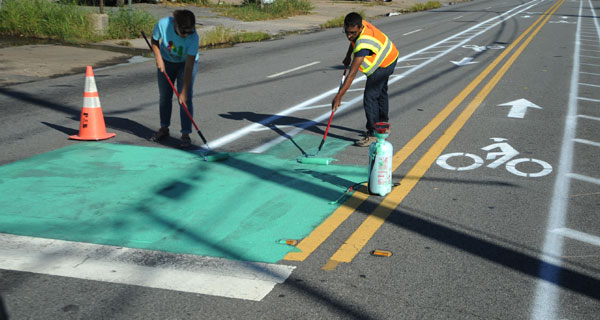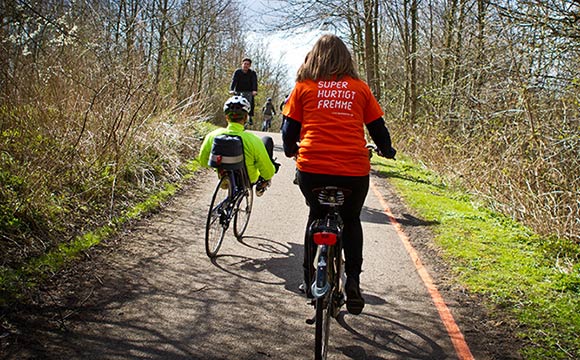
The pilot project that increased Macon’s bike counts by nearly tenfold
This blog originally appeared on 8 80 Cities’ website.
We’ve just launched our Macon Connects Report. Check it out for findings from the world’s largest pop-up bike network!”
Commuter biking, urban cycling, whatever you want to call it –it’s not really a thing in Macon, Georgia…yet. With a population of over 150,000 people, only 0.0003% of Macon’s population (45 people) regularly commute to school or work by bike. Those who own bikes typically only use them for recreational purposes, on trails or in parks.
When you look at Macon’s streets, it becomes obvious why people don’t bike. For one, bike infrastructure is scarce. There are only a few hundred feet of painted bike lanes throughout the entire city and no protected bike lanes to speak of.
Secondly, the last sixty years of land use patterns have favored suburbanization, with most residents living in sprawling residential areas outside of the core. The distances between residential neighborhoods and destinations are usually too far to connect to by bike.
However, Macon’s urban core is in the midst of a comeback. More businesses and people are choosing to locate downtown, a compact area that boasts a walkable urban street grid. With growing density in the core, biking could very well become a viable mode of transportation.
Thanks to a generous grant provided by the John S. and James L. Knight Foundation through the Knight Cities Challenge, the Macon Connects team (NewTown Macon, Macon-Bibb County, Main Street Macon, Macon-Bibb Urban Development Authority, Bike Walk Macon, Better Block, and 8 80 Cities) set out to test out Macon’s appetite for biking.
What would happen if we installed a 5+ mile network of bike infrastructure on Macon’s streets and left them up for a week?
The results from the experiment are in. Here’s what we found out.
1. If you build it, they will ride.
Average daily bike counts in downtown Macon skyrocketed by 9.5 times (854%). On an average day, with no bike infrastructure, downtown Macon typically sees 23 people on bikes. With the 5+ miles of pop-up bike infrastructure, there were on average 217 people riding bikes on Macon’s downtown streets each day. This jump in bike ridership clearly demonstrates the latent demand for cycling in Macon.
2. There is strong local support for investing in a bike network.
Even though the vast majority of Macon residents commute by car rate their daily commutes as above average, they still expressed a strong desire for more mobility options in Macon.
70% of surveyed residents support building a protected bike network in Macon.
84% said that they would support increasing public spending on pedestrian and cycling infrastructure, even if that meant reducing spending on driving infrastructure.
75% said that they would be willing to switch to a different mode of transportation.
Residents currently drive because it is the only option that is viable in Macon. They want more and better mobility options and strongly support investing in those options.
3. Keep it Simple & Safe (KISS)
We tested out five types of bike lanes to get resident feedback about the pros and cons of each one. While we got some juicy data out of this approach, the wide variation in bike lane designs also created confusion among road users. People found it hard to constantly transition between one type of bike lane to another. Rather than variety, drivers and cyclists alike called for more consistency.
Road users were most comfortable with bike lanes that were located directly next to the curb that flowed in the same direction as traffic (“keep it simple”), with either bollards or buffers separating cyclists from the travel lanes (“keep it safe”).
4. Biking creates new opportunities to connect to city.
Nearly two fifths (39%) of respondents said that prior to the pop up experiment, they had never ridden on a striped bike lane before, one of the most basic forms of bicycle markings. More than half of respondents had never biked on a bike lane with a painted buffer. This suggests that the Macon Connects pop-up bike network compelled recreational cyclists onto the road for the first time.
The pop-up bike lanes also provided them with an opportunity to slow down and pay closer attention to their surroundings.
68% of those who tested out the pop-up bike network said that they visited an area that they typically don’t go to.
75% of respondents said that they noticed new shops along the pop-up bike lane network.
This data gets to the heart of the Macon Connects project –that bike infrastructure is connective infrastructure, helping people tap into what their city has to offer.
The Macon Connects project can serve as a blueprint for other similar sized cities across North America that are looking to test out their constituents’ appetite for biking. Prior to this project, it would have been hard to prove that installing bike lanes in a city where 0.0003% of the population regularly bikes to work/school would have been a good use of public dollars.
The data we gathered from this experiment tells us otherwise –that if Macon invests in a network of protected bike lanes, the people will in fact ride.
-
Community Impact / Article
Recent Content
-
Community Impactarticle ·
-
Community Impactarticle ·
-
Community Impactarticle ·



